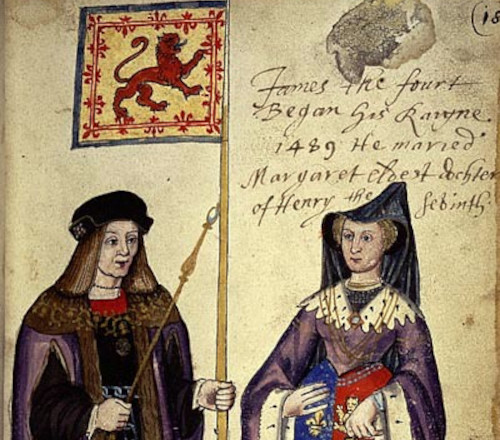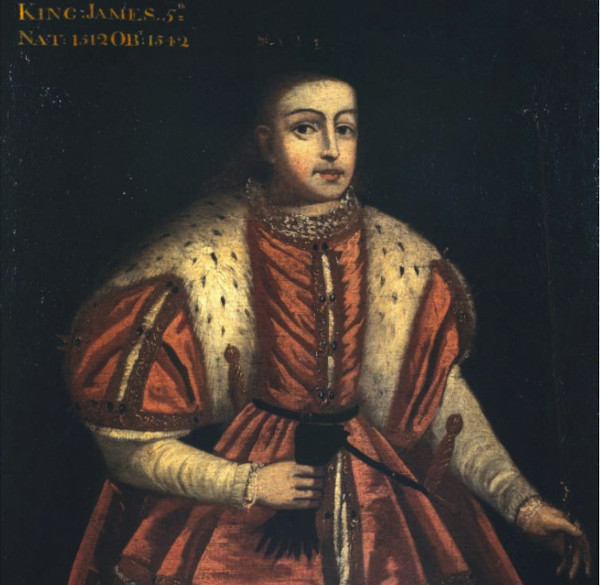
Linda Porter wasn’t intending to write Margaret Tudor’s biography. She came to it in a roundabout way, as she explains here. But Margaret’s story needed to be told.
My new biography of Margaret Tudor seeks to challenge the negative views so often expressed about this overlooked 16th-century queen. How I came to write it is something of a story in itself.
I’m sure the revelation that it wasn’t the book I intended to write will resonate with many authors.
After the success of my previous book, on Charles II’s mistresses, I certainly hoped to stay away from the Tudors and spent considerable time and effort producing a detailed and well-researched proposal for a book on the last year of Marie Antoinette’s life.
I was going to call it To Kill A Queen, but though American publishers expressed some interest (not enough, incidentally, to make an outright offer), no one in the UK wanted it. Even my agent had reservations.
There had been a change at the helm of the publisher I’d been with since 2010 and while my editor there liked the proposal she was overruled by the incoming head honcho, who wanted to take their non-fiction ‘in new directions’. Unsurprisingly, he himself went in a new direction quite speedily, but the tie had been cut.
I debated what to do next. The rejection had stung but I wasn’t ready to give up writing altogether. Mistresses had been a BBC Radio 4 Book of the Week and sold well.
It occurred to me that I had sufficient material from the extensive research I had done in England and Scotland for my third book, Crown of Thistles, the backstory of Mary Queen of Scots, to produce a biography of that hapless queen’s grandmother, Margaret Tudor.

Margaret had appeared in Crown of Thistles but the book was not about her. I’d always been struck by the dismissive comments, from Scottish and English historians alike, about Margaret’s character and abilities as a politician and felt that she had seldom been done justice.
With all the stuff I already had, surely it would be comparatively straightforward to write a book which would challenge perceptions of Margaret without being some kind of whitewash. My agent liked the proposal I put together and so did Head of Zeus Books. Thus The Thistle and the Rose: the extraordinary life of Margaret Tudor was born. It was published on 20 June, 2024.
Of course, it wasn’t all quite as much plain sailing as I had hoped. It’s a challenge to write about a period you’ve already covered without being repetitive. I did find new material, especially in contemporary literature, which I hope I’ve used to good effect.
Writing again about the tragedy of the death of Margaret’s first husband, King James IV of Scotland, at the Battle of Flodden was less emotional this second time around, but still brought tears to my eyes, and I am not a weepy historian.
Trying to convey the confusion and faction-fighting of the long period of the minority of James V, Margaret’s only surviving son, was taxing.
But Margaret’s is such a dramatic story that it needs to be told and the condescension and vicious criticisms aimed at this determined, if not always likeable woman, should be put in their place.
Except for a couple of academic papers, the extent of the sibling rivalry between Henry VIII and his elder sister, the Queen of Scots, is seldom appreciated. It provides further evidence of Henry’s flawed foreign policy, an aspect of his reign too often overlooked.
And, above all, it reinforces our view of Henry as misogynistic and fundamentally ill-natured. His six wives knew this only too well.
So did Margaret Tudor, but there is a delicious irony. Her line survived, and sits still on the throne of the United Kingdom. Henry VIII and Elizabeth I, for all that they still have such a dominant place in our history, cannot make such a claim.
The Thistle and the Rose by Linda Porter was published on 20 June, 2024.
Find out more about this book.
Linda is a historian, biographer, historical consultant and reviewer.
She has written several other pieces for Historia:
Review: Later Stuart Queens, 1660–1735
Catherine of Braganza, the neglected Queen
Charles II’s last mistress
Escaping the Tudors
Other features you may be interested in:
Margaret’s childhood governess: Joan Vaux – child prodigy and lady-in-waiting to four queens by Joanna Hickson
The man who escorted Margaret to her wedding in Scotland: Thomas Howard, the man behind the Tudors by Kirsten Claiden-Yardley
James V’s coronation, aged 17 months: Five memorable coronations by Frances Owen
Henry VIII, impotence and the thorny question of male heirs by Carol McGrath
Images:
- Margaret Tudor by Daniel Mytens, presumably copied from an earlier portrait: Royal Collection Trust / © His Majesty King Charles III 2022
- Miniature presumed to show Henry VII, his daughters Margaret and Mary, and Prince Henry behind them, from the Vaux Passional, c1502–3: © Llyfrgell Genedlaethol Cymru – The National Library of Wales
- James IV of Scotland and Margaret Tudor from the Seton Armorial in the National Library of Scotland: lisby1 for Flickr (public domain)
- James V as a boy: National Galleries of Scotland







